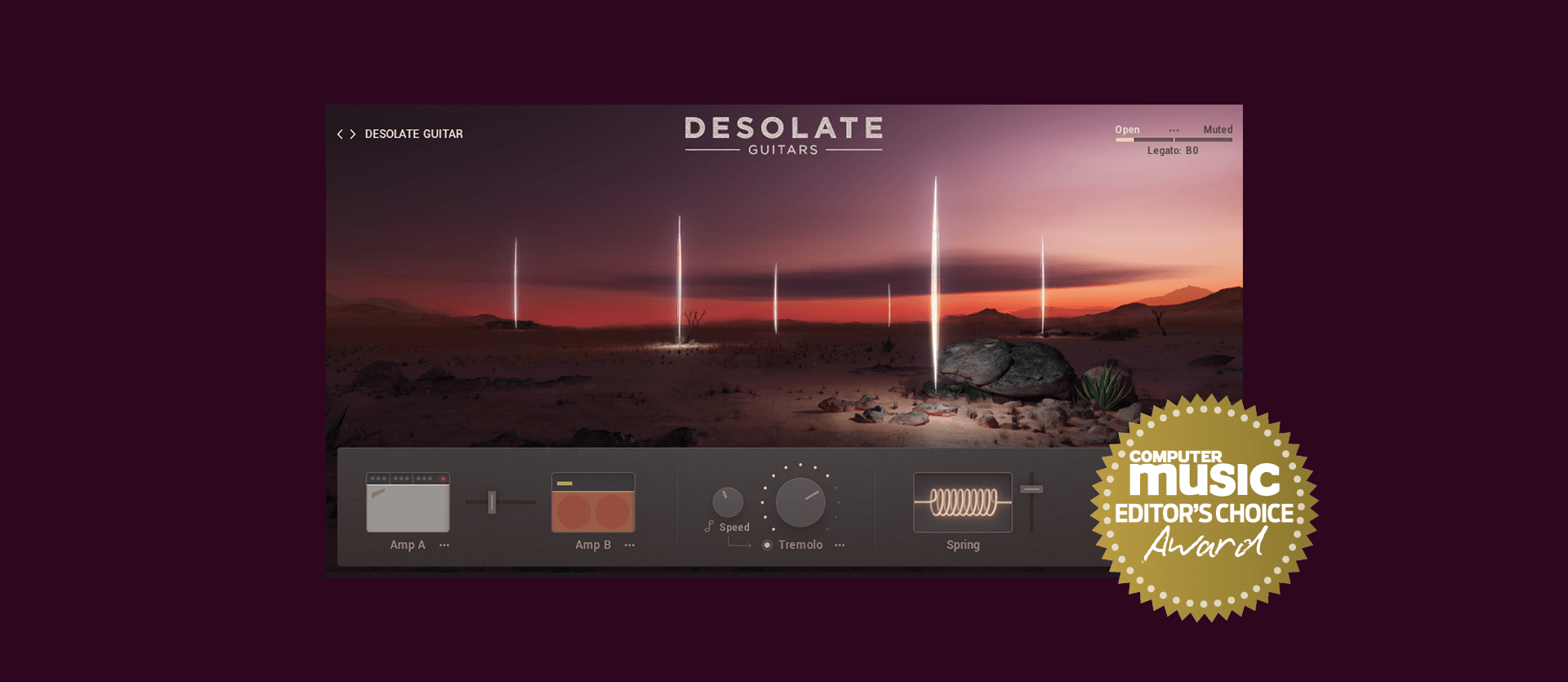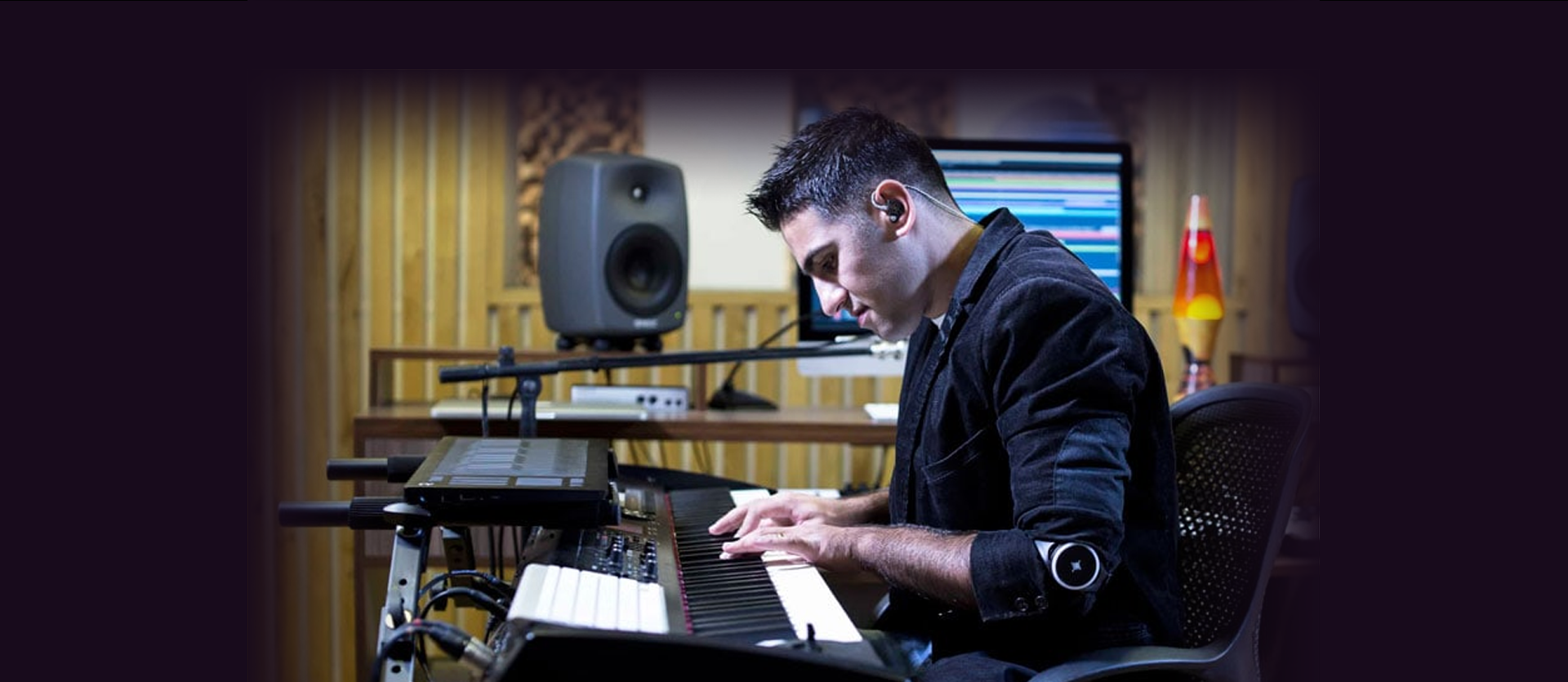Crafting The Sound: The Journey Behind Desolate Guitars – Part 2 Lars Dahlke

Dive into the second chapter of our blog series as we catch up with Lars Dahlke, e-instruments' Product Designer and accomplished guitarist. Seton Daunt's vision for a realistic guitar instrument found a perfect ally in Lars, and together, they harnessed their shared passion to transform the concept into a reality. Join us for an exclusive interview with Lars, exploring the intricacies of Desolate Guitars' journey from idea to instrument.
Photography: Hannes Von Der Fecht
Can you share the dynamics of your collaboration with the team on Desolate Guitars?
When I first heard about the idea of creating a library in this sound, I was immediately hooked. I’ve been traveling in a very similar direction to Seton with my guitar sound for many years. He’s mainly a Tele player, and I’m an Offset, hollow body, and baritone guitar player, but above all, we had a very similar idea of amp sounds and a tendency to use spring reverb and tremolo extensively. It was a welcome coincidence to be right on the same wavelength in terms of flavor.
Were there any challenges you faced during the creation of the product?
The original idea was to record all effects and effect combinations with real analog vintage devices, but also with different amps and guitars. However, if you do the maths for a sample library, you quickly realize that this won’t work. It would only work for a few notes, but then you would no longer have any options for intervention and would have to be lucky that exactly this sound with a fixed tremolo setting fits your current project. So we thought long and hard about how we could achieve the best combination of analog recording and digital flexibility. After many tests and prototypes, the concept of blending the dry and wet signals of the two amps emerged.
Can you delve into the recording techniques employed to capture the authentic tones of Desolate Guitars?
It starts with the guitar, of course. The choice of guitar, the respective pickups, strings, which pick, which is a very underestimated part, and above all what is played where on the fretboard and how. For the concept of blending between different phase-locked signals, you first have to record a signal that is as clean as possible, which you can then re-amp as often as you like.
We then looked for two complementary amp settings for each patch, which also work just as well on their own. This sometimes took a few rounds until we were satisfied. As far as the microphones and preamps were concerned, we put together some classic combinations and in the end, we usually decided in favour of the SM57 and Royer r-121 ribbon microphone combination. The four Shelford Channels did a very good job as preamps; depending on the articulation, we added some compression and colouration via the “silk” feature on the channel strip. Of course, we ended up converting everything to as high a resolution as possible.
Were there specific challenges or unique approaches in recording for this project?
We let the sessions run for a very long time, night after night for many weeks to months, because we always needed 4 signals per tone and also let the tones sustain to the end naturally instead of stopping them.
How did you balance the pursuit of authenticity with the intentional retention of imperfections in the recordings?
We only worked on obvious errors and held back as much as possible when editing the sounds. We always made the patches playable straight after the recording, that’s the best way to try out whether you’ve taken it too far or not. When we were in doubt, we chose authenticity over perfection.
In what ways do these imperfections contribute to the character of Desolate Guitars?
So for example: In the attack, or actually before the attack of each note, you can already hear the pick hitting the string. If you try to remove this noise before the actual note, so that the notes you play later stick directly to the key, so to speak, the sound loses a lot of character. So we deliberately left the plectrum noises as they are, even if the attack of the actual note happens a few milliseconds later.
Do you have favorite articulations or sounds within Desolate Guitars that you find particularly expressive or unique?
Oh, that’s hard to say, I’m a big fan of all of the swells, the unique baritone guitar and the Detuned Feedback. Try that one on Reverse!
Were there specific design considerations to ensure an intuitive experience for users?
Simplicity and clarity are also in the foreground here. On the main page, you’ll find everything you need to get the best out of Desolate Guitars. You can go deeper if you want, for example into the FX chain, but the focus is clearly on the recorded sounds, the blending between the signals and what you can do with them.
Can you share insights into the selection process and the balance between variety and usability? Are there specific articulations you believe will stand out to users?
We wanted to cover as many variations as possible that matched the sound and the image and were also highly playable. Probably the most important and extensive patches are those from the “Sustains & Mutes“ category. We recorded the full range, round robins, optional open strings and legato transitions to get very lively guitars. But then we recorded a lot of more special stuff, like all the chord and swell patches which are also very useful. Even more special and unique are all the looped textures and the feedback patches, you won’t get anything like that with other libraries as far as we know.
The tremolo features in Desolate Guitars are modeled from vintage amps. How did you approach capturing the essence of these original tremolos?
Well, we recorded a number of reference tones of one of the guitars with different Tremolo speed and Depth settings, measured the outcome, and extracted various controller data from it. After that, we used the controller data to emulate the tremolo to compare the two references, tweaked and tried different settings over and over until we were very happy with the result. It’s easy to presume the Tremolo is just some kind of LFO controlling the volume but it’s way more than that. One detail that we really like about the tremolo on vintage amps is that the attacks of the individual guitar notes always come through well, even at extreme settings. This is something tremolo emulations and even boutique pedals often seem to overlook.
Desolate Guitars includes extensive FX presets. How were these designed, and what role do they play in enhancing the user experience?
The Idea of the FX-Macro and the corresponding FX-Chain Presets is, to give the User simple and direct access to dial in extra lushness with one knob. We carefully selected the FX that sound best on guitars and created impulse responses from a lot of our reverb devices to be able to set the sound as we would in the studio.
Can you share your favorite FX preset and the inspiration behind it?
Well, I can say that a number of the FX-chain Presets are inspired by the way I would use my favourite guitar pedals on my pedalboard. I love to dial in large reverbs and crank up the feedback of the delays until it starts to oscillate only to dial it back when you have enough of it.
As we conclude the interview, what final thoughts or messages would you like to share with musicians and enthusiasts eager to explore Desolate Guitars?
This was definitely a project that I personally loved doing. As a guitarist the instrument is very close to my heart. I don’t have any specific message. Just go and check out the walkthrough and the audio demos to hear the product. I think it’s versatility is one of it’s strong points. The guitars and amps we recorded are synonymous with certain styles and genres but they have been used all over the place over the years. We don’t want to pigeon hole the product by stating what it’s for – people who use the product will make their own mind up. We just hope people love it as much as we do! (Laughs).




